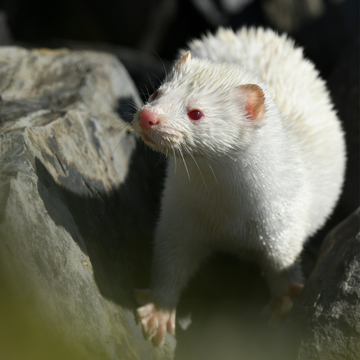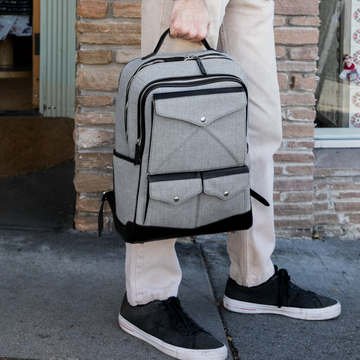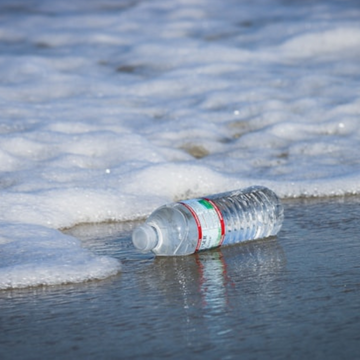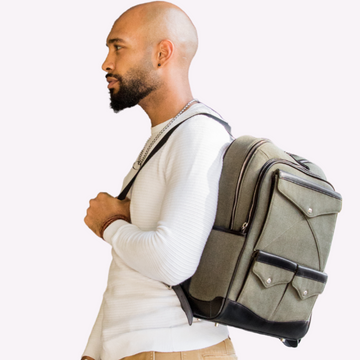You can find plastic all around you whether you walk on the street, quietly sit near the seashore, or take your kid to a park. You can see plastic waste every day from bottles, grocery bags, and cards. However, many of these plastics come from materials like petrochemicals. Plastic usually causes litter and pollution on the planet. It adversely affects human beings, animals, plants, and the environment as a whole.
Moreover, plastic waste is not managed correctly. In that case, it can be life-threatening, and creating new plastic will be a waste of resources, which is why it becomes reasonable to reuse and reprocess plastic to prevent waste. For this reason, plastic recycling has become an essential process in producing plastic. This article will discuss everything about recyclable plastic waste and why recycling is good for humans and the environment.
Plastic recycling is collecting waste plastic and reconverting them into new and valuable plastic products. If we talk about the whole world, then pollution across the globe produces and uses more than a trillion pounds of plastic material. However, plastic recycling ensures that this vast amount is used wisely; you can reprocess the materials to get other products.
However, you might not know, but seven different types of plastics are being used worldwide. They differ in size, color, shape, usage, and disposal. But as a curious consumer, you might wonder what type of plastic is recyclable. And what products can be produced by recycling them? But before that, let us discuss the barriers to recycling.
The barriers to recycling:
Although all plastics can be recycled, various barriers can weaken the recycling process. Sadly, it does not always make environmental, economic, or technical sense to do. Mentioned below are some of the significant reasons why recycling plastic cannot happen always-
1. Often, certain items can include different types of plastic and other layers that are hard to separate and make recyclable processes difficult and costly.\
2. Plastics can be contaminated by food and other elements, making the adhesive not clean enough to be reused.
3. Recycling facilities cost millions of dollars to develop and operate, and they can be successful only when a considerable amount of plastic is treated daily. Small quantities of plastics make recycling non-economical and non-beneficial due to low efficiencies and higher costs.
What are the most common recycled plastics?
The most common types of recycled plastic materials we come across daily can be recycled.
- PET
PET (polyethylene terephthalate) is a famous thermoplastic; the material is thin and is perfect for developing low-pressure products. Clothing materials and soft drink bottles are popular products made out of PET.
- PVC
PVC (polyvinyl chloride) is another type of thermoplastic.
It is one of the most commonly used plastic materials around the world.
PVC creates wires, pipes, bottles, and cling films.
- HDPE
High-Density Polyethylene is another thermoplastic that is softer and more flexible than PVC. Gallons and pipes are examples of products that are manufactured using HDPE.
- LDPE
The material is the opposite of HDPE; LDPE stands for (Low-density polyethylene) which is used to make plastic bags. Rather than recycling, you can clean and use them for other purposes. But sometimes it is not possible to recycle this material. Moreover, you cannot recycle all types of plastics because they come from different materials, and recycling them is expensive. Usually, it is either a long process, high cost, or the ineffectiveness of the existing recycling process.
If you wonder what type of plastic falls under this category, continue reading the below section.
- PS
PS stands for polymer, the material from which products like plastic cutlery and yogurt containers are made.
- PP
PP is another recyclable polymer; producers frequently use it to make plastic boxes, furniture, and jar lids. In significant situations, recycling companies will reject it for recycling.
Now we can conclude that recycling plastic depends on the type of material. And non-recyclable plastics usually get disposed of in landfills.
Types of Plastic Recycling Methods:
There are two types of plastic recycling methods:
- Traditional recycling-
The traditional method of recycling is the most common. However, another word for standard recycling is mechanical recycling. Though, this type of method is most suitable for thermoplastic materials. This method involves melting plastics and processing them into new plastic products. After melting the plastic, it is made into new products through injection molding.
- Advanced recycling-
Advanced recycling is a technique through which the effect of chemicals breaks down plastic material. The method includes three other processes: pyrolysis, chemical recycling, and gasification.
Pyrolysis is a technique that includes recycling plastic waste into crude oil. Chemical recycling reduces a polymer into a monomer that can create new products. At the same time, gasification transforms plastic into gas. The producers use gas to produce energy.

However, both traditional and advanced recycling methods have their benefits of reducing plastic waste. But applying any one of the two methods depends on the facilities available. The end product a recycler aims to produce also determines the recycling method.
The Process Of Recycling Plastic:
The recycling process of plastic material is more straightforward than manufacturing new plastic. But at the same time, it is more challenging than it seems; the process involves painful procedures and attention to detail. The process might take time, say even months. Regardless of the type of plastic used, it usually undergoes some general steps during recycling. Below we have discussed six essential steps that explain how plastic is recycled.
- Collection of plastic waste
The initial step in plastic recycling is collecting waste plastic products. Though this process might seem like an easy task, it is not so. At this stage, the employees and volunteers work around collecting plastic waste from homes, offices, and public areas. However, some specific areas have collection sites where people can dispose of their plastics.
The recycle bin is different from other bins, and these bins are collected and transferred to recyclers for further processing. Some recyclers even put recycling bins around public locations, residential areas, and industrial areas to make the collection process more accessible. People can dispose of their plastic waste in these bins.
- Sorting of plastics
After collection, recyclers dispatch the plastic they have gathered to facilitate where they separate the plastics depending on their type. As we have discussed above, plastics come in different sizes, shapes, and thicknesses. Under this process, recycling machines sort plastics based on the material's properties. Sometimes the plastic's color and wax content in the plastic is the basis by which recyclers sort plastics. Sorting is necessary because it lets them know which material is involved and how it can be recycled.
- Washing the pollutant
Following the sorting step, recyclers wash the material to remove pollutants and other contaminants. These pollutants in plastic include paper labels, dirt, and other particles. Washing plastic material also removes glue and additional chemicals that plastic material might carry.
- Shredding and resizing
It is impossible to recycle plastic material in its originally developed state; it needs to be resized to create a form that can be recycled. Under this process, materials will be put into shredders to reduce the plastic into fragments. Shredding also reprocesses the plastic to other materials. Resizing also makes it easier to find elements like metals that recyclers neglect to discover during the above process.
- Identification and separation of plastics
The next step is to identify and separate plastic material, and under this process, plastic particles undergo a testing procedure. The reason behind testing plastic material is to determine its quality. Further, it is separated depending on its features. Although numerous features are tested under this process, one of the qualities is density. The recyclers put these plastic particles in a container of water to identify the thickness of the plastic. The sink particles are less dense, while those that float are denser.
Air classification of plastic materials is another quality tested under this process. Air classification determines plastic thickness, and recyclers put plastic particles into wind tunnels to assess air classification. Thick and big plastic will stay at the bottom, and the thinner ones will float.
The above process also determines the cooling and melting points of plastic, recyclers test samples of plastic materials to choose each material's melting point and color. After the identification, they separate the plastic particles and send them for further processing.
- Compounding
Compounding is the final process under plastic recycling; this is the step where recyclers transform plastic particles into materials that manufacturers can reproduce. Compounding involves smashing and melting plastic particles to create pellets. At the end of this stage, new plastic and non-plastic products originate from the pellet's processing. The whole process consumes a lot of time and energy. Moreover, recyclers must understand the end product which they desire to get and manage their time and energy efficiently.
Final Thoughts:
Plastics serve many purposes in our daily life, but in the end, it is the material responsible for polluting the environment. In the above blog post, we have discussed recycling plastic waste, which can help reduce pollution at a specific limit. I hope you find this blog helpful.
Also, Read the Important Information about How to stop Greenwashing?







